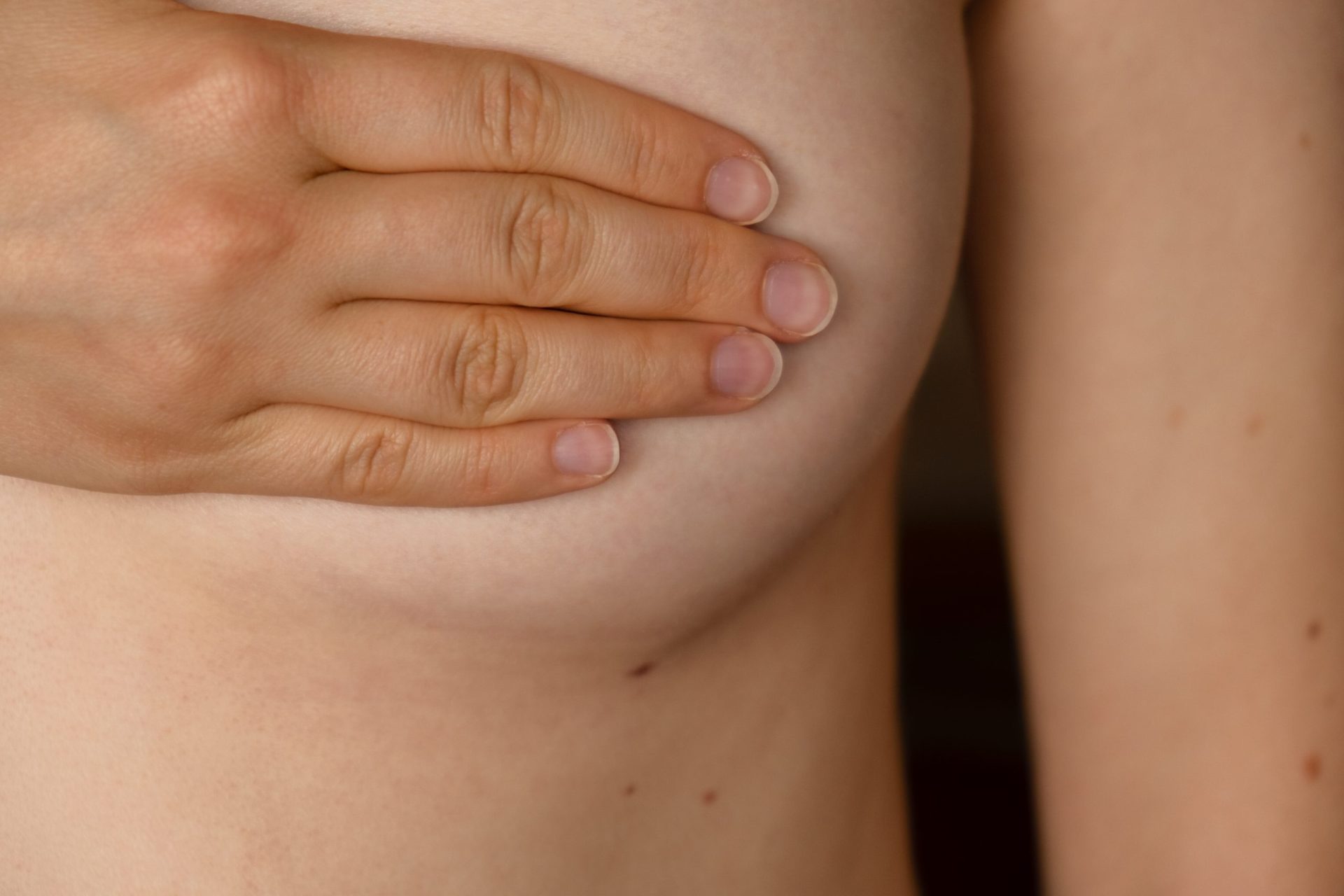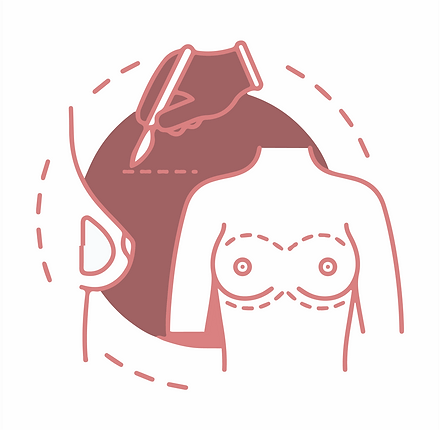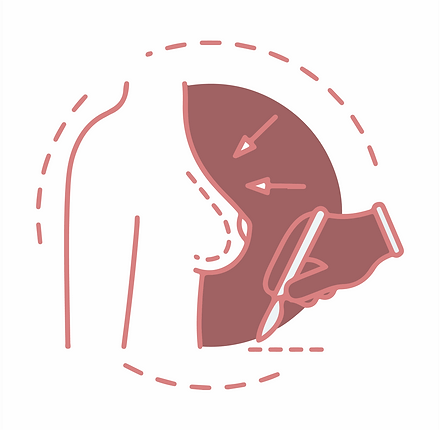Breast Aesthetics
At Cades Clinic, we understand the profound impact of body image on self- confidence, self-esteem, and overall mental health. We specialize in a range of breast aesthetics procedures, including breast lift, augmentation, reduction, implant removal, and inverted nipple operation, to enhance your body image and improve the quality of your life. Let’s delve into each of these procedures.
Breast Lift
As gravity works its magic and with the passing of time, many women experience sagging or drooping breasts. A breast lift, or mastopexy, offers a solution to this, reshaping the breasts to give them a more youthful and perky appearance.
Frequently Asked Questions (FAQs)
About Breast Augmentation
Breast Lift (Step-by-Step)
At Cades Clinic, our highly trained and experienced surgeons carry out the Mastopexy
(breast lift) procedure with precision and utmost care.
The process involves several well-coordinated steps
1.Anesthesia
3.Incision
5.Repositioning of Breast Tissues

2.Closure of the Incision
4.Post-Operative Care and Recovery
6.Continued Medical and Nutritional Support
Breast Lift (Step-by-Step)
At Cades Clinic, our highly trained and experienced surgeons carry out the Mastopexy (breast lift) procedure with precision and utmost care.
The process involves several well-coordinated steps:
Anesthesia
Incision
Repositioning of Breast Tissues
Closure of the Incision
Post-Operative Care and Recovery
Continued Medical and Nutritional Support
This systematic, step-by-step approach to breast lift surgery at Cades Clinic ensures patient safety, comfort, and satisfaction, yielding aesthetically pleasing and long-lasting results.
Frequently Asked Questions (FAQs) About Breast Lift (Mastopexy)

Breast Augmentation
Breast augmentation, also known as augmentation mammoplasty, is a surgical procedure performed at Cades Clinic to enhance the size and shape of a woman’s breasts. This is achieved through the placement of breast implants or by fat transfer, which can lead to a significantly improved body image and self-confidence.
The decision for breast augmentation can stem from a variety of reasons, including balancing breast size, compensating for reduced breast mass post-pregnancy, correcting a congenital breast defect, or simply enhancing one’s physical appearance and self-confidence.
Breast Augmentation
Breast augmentation, also known as augmentation mammoplasty, is a surgical procedure performed at Cades Clinic to enhance the size and shape of a woman’s breasts. This is achieved through the placement of breast implants or by fat transfer, which can lead to a significantly improved body image and self-confidence.
The decision for breast augmentation can stem from a variety of reasons, including balancing breast size, compensating for reduced breast mass post-pregnancy, correcting a congenital breast defect, or simply enhancing one’s physical appearance and self-confidence.
Breast Augmentation
(Step-by-Step)
Frequently Asked Questions (FAQs)
About Breast Augmentation
The Benefits of Breast Augmentation
Combined Between Breast Lift and Breast Augmentation? (Mastopexy with silicone)
Mastopexy with silicone, also known as a breast lift with silicone implants, is a combined surgical procedure that aims to enhance the shape, size, and position of the breasts. The mastopexy aspect of the procedure addresses sagging and drooping by removing excess skin and reshaping the breast tissue for a lifted, perkier appearance. Following the lift, silicone implants are inserted to increase the size of the breasts and enhance their shape. Silicone implants are often chosen for their natural feel and variety of shapes and sizes. This combined procedure can provide a comprehensive rejuvenation of the breasts, enhancing both their position and volume. As always, a consultation with a board-certified plastic surgeon is necessary to determine if this procedure is the right fit for your aesthetic goals.
Combined Between Breast Lift and Breast Augmentation? (Mastopexy with silicone)
Mastopexy with silicone, also known as a breast lift with silicone implants, is a combined surgical procedure that aims to enhance the shape, size, and position of the breasts. The mastopexy aspect of the procedure addresses sagging and drooping by removing excess skin and reshaping the breast tissue for a lifted, perkier appearance. Following the lift, silicone implants are inserted to increase the size of the breasts and enhance their shape. Silicone implants are often chosen for their natural feel and variety of shapes and sizes. This combined procedure can provide a comprehensive rejuvenation of the breasts, enhancing both their position and volume. As always, a consultation with a board-certified plastic surgeon is necessary to determine if this procedure is the right fit for your aesthetic goals.

Frequently Asked Questions (FAQs)
About Breast Reduction
Breast Implant Removal
Breast implant removal, also known as explantation, is a surgical procedure that involves removing breast implants and the surrounding scar tissue. The procedure can be done for various reasons, such as implant rupture, capsular contracture, dissatisfaction with the size or shape of the implants, or to address health concerns related to breast implants.
Breast Implant Removal procedure typically involves making incisions around the breast and removing the implant. Depending on the individual case, the implant might be removed through the same incision used during the initial surgery, or through a new incision. After the implant is removed, the surgeon will typically close the incision with sutures. Recovery time varies, but patients can generally expect some pain, swelling, and bruising for a few weeks. It’s important to have a thorough discussion with your surgeon about the benefits and risks of the procedure prior to making a decision.
Inverted Nipple Operation
An inverted nipple operation, also known as a breast revision, is a surgical procedure that corrects inverted or retracted nipples. Inverted nipples are a condition where the nipples are pulled inward and do not protrude normally. The procedure typically involves making an incision around the areola, releasing the ducts and ligaments that are pulling the nipple in. And reshaping the tissue to achieve a more natural-looking nipple. After the procedure, the incision is closed with sutures. In some cases, the surgeon may use a special device, called a nipple suture, to maintain the position of the nipple after the surgery.
Recovery time can vary, but patients can expect some pain, swelling, and bruising for a few weeks. It’s important to have a thorough discussion with your surgeon about the benefits and risks of the procedure prior to making a decision.
Inverted Nipple Operation
An inverted nipple operation, also known as a breast revision, is a surgical procedure that corrects inverted or retracted nipples. Inverted nipples are a condition where the nipples are pulled inward and do not protrude normally. The procedure typically involves making an incision around the areola, releasing the ducts and ligaments that are pulling the nipple in. And reshaping the tissue to achieve a more natural-looking nipple. After the procedure, the incision is closed with sutures. In some cases, the surgeon may use a special device, called a nipple suture, to maintain the position of the nipple after the surgery.
Recovery time can vary, but patients can expect some pain, swelling, and bruising for a few weeks. It’s important to have a thorough discussion with your surgeon about the benefits and risks of the procedure prior to making a decision.









